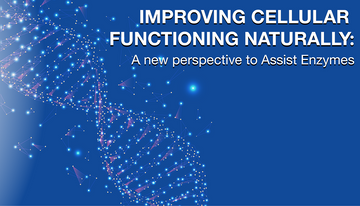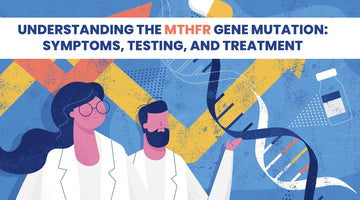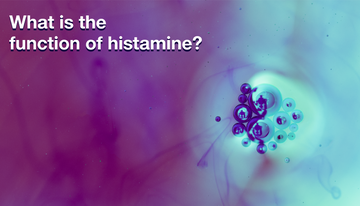Introduction:
This blog is based on a scientific publication. Check it out!

Enzymes are biological molecules that speed up chemical reactions in living cells. They are essential for many processes, such as digestion, metabolism, and DNA replication. One of the key features of enzymes is their three-dimensional structure, which is determined by their amino acid sequence. The structure of an enzyme has a special region called the active site, where the substrate (the molecule that the enzyme acts on) binds and undergoes a chemical transformation. The active site is usually the most rigid, meaning that it does not change much in shape.
However, recent studies have shown that the active site is not static, but rather undergoes rapid and localized vibrations. These vibrations are essential for the enzyme's catalytic activity and are influenced by the temperature. The active site is characterized by continuity/order, meaning that it can transmit, distribute and dissipate energy. The rate of chemical reactions can be enhanced by rate promoting vibrations (RPVs) that modulate the localized vibrations. The other parts of the enzyme that are more flexible and less conserved are coupled with higher frequency motions and are characterized by disorder/discontinuity.
What is the significance of these findings? They suggest that enzymes are not just passive catalysts that lower the activation energy of a reaction, but rather active participants that vibrate to facilitate the reaction. They also imply that we can modulate enzymes’ activities to speed up or slow down their activities under different environmental conditions (in cells that are sick for example) if we change their vibrational modes.
In this blog post, we will explore the concept of enzyme vibrations in more detail and discuss some of the experimental and theoretical methods that have been used to study them. We will then explore the concept of the optimal frequencies of enzymes. Finally, we will briefly present some of our research findings, exemplifying a natural way to speed up enzymatic activity, opening the door to some opportunities for future research and applications in this exciting field.
1. Remote control of enzymes?
I think might be helpful to first understand what the word resonance means. Resonance is a key concept in understanding how enzymes interact with external frequencies. Enzymes have specific vibrational frequencies that depend on the bonds between their atoms and molecules. These frequencies can be affected by external electromagnetic fields, which may alter the shape and activity of the enzymes. This could have important implications for enzyme function and regulation.
The idea of resonance has a long and controversial history, but it has been revived by the use of new algorithms. The natural resonance theory (NRT) is a modern approach that uses convexity-based algorithms to describe the multiple structures of a molecule. NRT can explain many resonance phenomena in organic and biochemistry, as well as in inorganic chemistry. NRT can also reconcile the different ways of describing reaction mechanisms in physical and organic chemistry. NRT can show how
bonds shift between reactants and products, and how resonance affects the energy profile of the reaction. For example, NRT can calculate the resonance weight along tautomerization, which is a type of proton transfer. As the proton moves, the resonance increases as the second structure becomes more important. The transition state is then highly delocalized. The resonance weight can represent a single chemical species or an enzyme that has a quantum superposition of frequencies from different resonance structures.
So, through resonance one can control enzymes remotely. And scientists do that all the time. Remote-controlled enzyme technologies have been widely used in the chemical synthesis, biomedical, and food industries for decades. A good example: Patruno and colleagues showed that an electromagnetic field (EMF) significantly increased enzymatic antioxidant activities of iNOS, CAT and Cytochrome P450 protein. Increasing antioxidant activity means that some so called “anti-aging” enzymes can be “boosted”. We will certainly have a later blog about that!
2. Enzyme activity is based on resonance at a certain frequency
The Resonant Recognition model (RRM) is a method that has been used successfully to predict which frequency to use to modulate protein activity. In 2015, Cosic et al. presented the RRM predicting successfully resonance in telomerase, DNA (telomere) and RNA (TERT mRNA), and proposed that RRM is a revolutionary new approach which is that macromolecular activity is based on electromagnetic resonances. And that is the topic of another blog.
Electromagnetic resonance is the phenomenon of a system absorbing energy from an external source that matches its natural frequency. For example, a tuning fork will vibrate when exposed to a sound wave of the same pitch. Similarly, enzymes have specific frequencies that correspond to their molecular structure and function. When an enzyme encounters a substrate (the molecule it acts on), it forms an enzyme-substrate complex that has a different frequency than the enzyme alone. This frequency change can affect the energy and stability of the complex, and thus influence the reaction rate.
One way to measure the frequency of an enzyme-substrate complex is to use nuclear magnetic resonance (NMR) spectroscopy. NMR is a technique that uses a strong magnetic field to align the nuclei of certain atoms. Then, a radiofrequency pulse is applied to excite the nuclei and make them emit signals that can be detected and analyzed. The signals reveal information about the structure, dynamics, and interactions of the molecules in the sample.
By using NMR, researchers have found that some enzymes exhibit resonance effects when they bind to their substrates. For instance, a study by Kamerlin et al. (2013) showed that human purine nucleoside phosphorylase (PNP), an enzyme involved in nucleotide metabolism, resonates with its substrate at around 600 MHz. This resonance enhances the catalytic power of PNP by lowering the activation energy of the reaction. The authors suggested that this mechanism could be exploited for designing more efficient and selective inhibitors of PNP, which could be useful for treating diseases such as leukemia and malaria.
Another example of resonance in enzyme activity is provided by Zhang et al. (2018), who investigated the effect of electromagnetic fields on the activity of horseradish peroxidase (HRP), an enzyme that catalyzes the oxidation of various organic compounds. They found that HRP activity increased by 33% when exposed to a 50 Hz electromagnetic field, and decreased by 29% when exposed to a 100 Hz
electromagnetic field. They explained that these frequencies matched the natural frequencies of HRP and its complex with hydrogen peroxide, respectively. Therefore, the 50 Hz field stimulated the formation of the complex, while the 100 Hz field disrupted it.
These examples illustrate how electromagnetic resonance can modulate enzyme activity by altering the energy and stability of enzyme-substrate complexes. Unfortunately, a frequency (of say, 900 Hz) could increase the activity of one enzyme while decreasing the activity of another one. That is not good, obviously. So, we need to do what nature is doing: use the specific frequencies of each enzyme when the enzyme is at its optimal shape.
3. Optimal frequency of an enzyme
The frequency of electromagnetic field can affect the catalytic activity of enzymes. Enzymes have a specific optimal frequency that matches their molecular structure and enhances their catalytic power. This is because the frequency induces a resonance effect in the enzyme-substrate complex, which stabilizes the transition state and facilitates the reaction. The resonance effect depends on the frequency of the radiation and the shape of the enzyme-substrate complex. Different frequencies will have different effects on the bond formation and breaking between the enzyme and the substrate.
The frequency that causes the optimal resonance effect is called the optimal frequency of the enzyme. The optimal frequency is unique for each enzyme and depends on its structure and function.
Some researchers, as we do, think that, in a living cell, the closer the frequency radiation is to the specific optimal frequency of the enzyme, the more optimal the resonance and the chemical rate. The specific resonance frequency used depicts its own specific energy profile (also called spectrum or “energy signature”). Every molecule vibrates in specific ways and emits characteristic energy spectra. The radiation (or absorption pattern) is a spectrum and can be displayed as a graph of energy intensity vs. frequency or wavelength. As enzymes are most often big molecules, their spectra can be intricate. Each frequency applied to the enzyme-substrate complex would put different resonance weight on the system and might shift bonds differently between enzyme and substrate bonding patterns.
Testing that theory, were able to speed up catalase activity (in suboptimal conditions) by 120-130% (which is high in biological terms) using that simple concept: putting a resonance weight on the active site of the enzyme by “radiating” on it the optimal frequencies (or energy signature) of that enzyme. We were also able to prevent the acceleration of catalase activity by putting a resonance weight away from the active site, which mimics a natural regulation of the enzyme.
4. Putting a resonance weight on the active site of the catalase enzyme to speed it up
Catalase is an enzyme that catalyzes the decomposition of hydrogen peroxide into water and oxygen. It is one of the most efficient enzymes in nature, with a turnover rate of about 40 million molecules of hydrogen peroxide per second. Catalase is essential for protecting cells from oxidative damage caused by reactive oxygen species.
The active site of catalase is a heme group that contains an iron atom. The iron atom can switch between two oxidation states: Fe(III) and Fe(II). When hydrogen peroxide binds to the iron atom, it is reduced to Fe(II) and water, while releasing oxygen. Then, another molecule of hydrogen peroxide oxidizes the iron atom back to Fe(III) and water, completing the catalytic cycle.
The rate of catalase activity depends on several factors, such as the concentration of hydrogen peroxide, the pH, the temperature, and the presence of inhibitors or activators. One way to modulate the catalase activity is by changing the resonance structure of the heme group. Resonance is a phenomenon in which a molecule can be represented by two or more equivalent structures that differ only in the distribution of electrons. The actual structure of the molecule is a hybrid of these resonance structures.
The old way
By putting a resonance weight on the active site of catalase, we can increase the stability of one resonance structure over another. This can affect the reactivity of the iron atom and the binding affinity of hydrogen peroxide. For example, if we put a positive resonance weight on the nitrogen atoms that coordinate with the iron atom, we can increase the electron density on the iron atom and make it more prone to reduction by hydrogen peroxide. This will speed up the first step of the catalytic cycle and increase the overall rate of catalase activity.
On the other hand, if we put a negative resonance weight on the nitrogen atoms that coordinate with the iron atom, we can decrease the electron density on the iron atom and make it less prone to reduction by hydrogen peroxide. This will slow down the first step of the catalytic cycle and decrease the overall rate of catalase activity.
How can we put a resonance weight on the active site of catalase? One way is to use a magnetic field. A magnetic field can induce a magnetic moment on a molecule that aligns with or opposes the field direction. This can change the energy and stability of different resonance structures. For example, if we apply a magnetic field parallel to the plane of the heme group, we can induce a positive magnetic moment on the nitrogen atoms that coordinate with the iron atom, and a negative magnetic moment on the opposite side of the heme group. This will create a positive resonance weight on the active site and increase the catalase activity.
Conversely, if we apply a magnetic field perpendicular to the plane of the heme group, we can induce a negative magnetic moment on the nitrogen atoms that coordinate with the iron atom, and a positive magnetic moment on the opposite side of the heme group. This will create a negative resonance weight on the active site and decrease the catalase activity.
Another way to put a resonance weight on the active site of catalase is to use an electric field. An electric field can induce an electric dipole moment on a molecule that aligns with or opposes the field direction. This can change the polarity and charge distribution of different resonance structures. For example, if we apply an electric field parallel to the plane of the heme group, we can induce an electric dipole moment that increases the positive charge on the nitrogen atoms that coordinate with the iron atom, and decreases the negative charge on the opposite side of the heme group. This will create a positive resonance weight on the active site and increase the catalase activity.
Conversely, if we apply an electric field perpendicular to the plane of the heme group, we can induce an electric dipole moment that decreases the positive charge on the nitrogen atoms that coordinate with the iron atom, and increases the negative charge on the opposite side of the heme group. This will create a negative resonance weight on the active site and decrease the catalase activity.
Unfortunately, applying a magnetic or an electric field perpendicular to the plane of the heme group is not feasible in cells. Another method is needed. Applying the optimal frequency of an enzyme that we are calling its “energy signature” is more realistic.
A New Way
Applying the optimal frequency of the enzyme to put resonance weight on the active site.Using another technology (applying the optimal frequencies of the enzyme, its energy signature), we have been able to speed up catalase activity by 120-130% (which is very high in biological terms) by putting a resonance weight on the active site. We used the optimal spectrum or “energy signature” of catalase to do so. We were also able to prevent the acceleration of catalase activity by putting a resonance weight away from the active site using another naturally occurring frequency of that enzyme.
Conclusion
Applying the specific (natural) optimal frequencies (the optimal “energy signature”) of an enzyme puts a resonance weight on the active site of the enzyme and accelerates its activity. This is what nature is doing. If enzymes are impaired by toxins, genetic problems, or other factors, we can assist them by sending them their own optimal frequency, which will increase the resonance weight on the active site and boost their activity. This way, we can improve cellular functioning and health in a natural way.
References:
Cosic, I., Cosic, D. & Lazar, K. Is it possible to predict electromagnetic resonances in proteins, DNA and RNA?. EPJ Nonlinear Biomed Phys 3, 5 (2015).
Patruno, A. et al. Effects of extremely low frequency electromagnetic field (ELF-EMF) on catalase, cytochrome P450 and nitric oxide synthase in erythro-leukemic cells. Life Sciences, 121, 117-123, (2015), https://doi.org/10.1016/j.lfs.2014.12.003.





